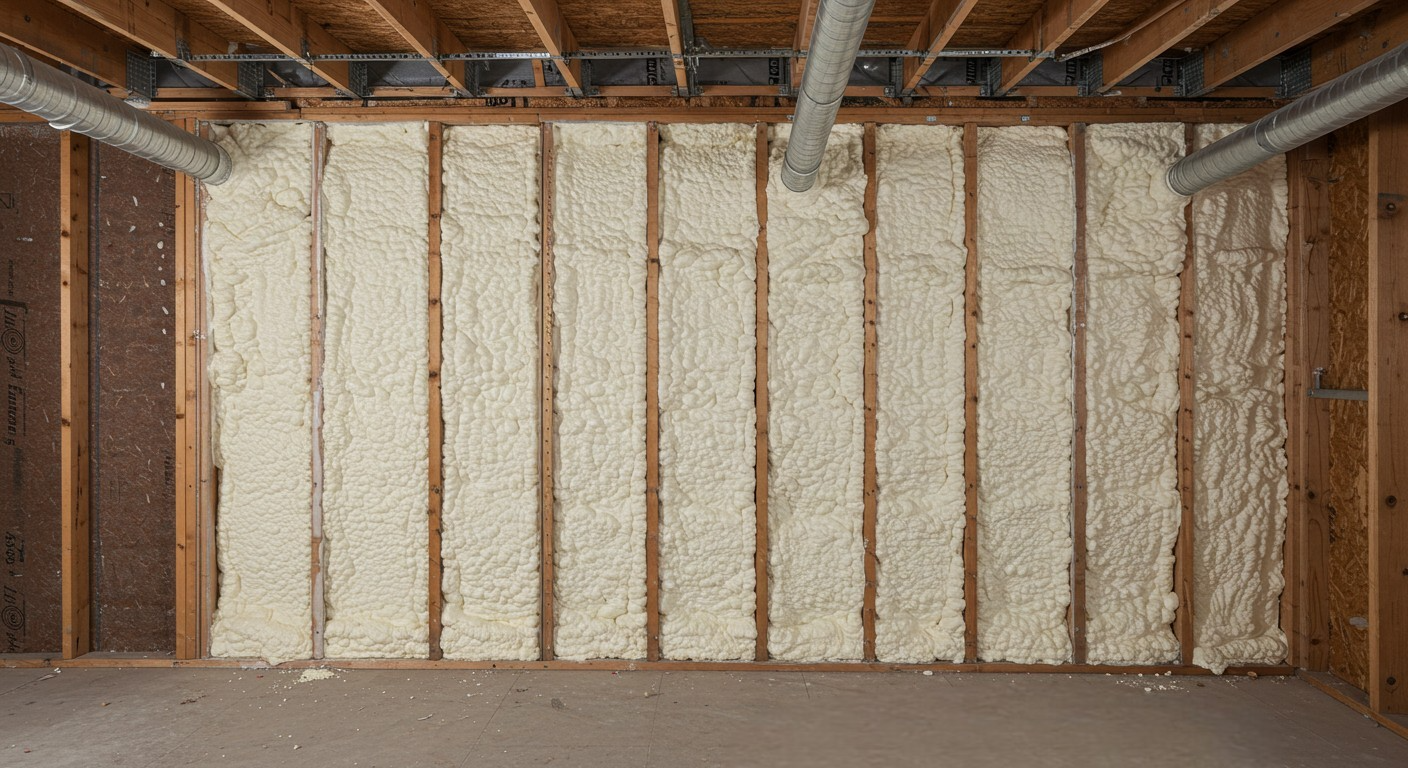Spray foam insulation is often misunderstood. The most common myths in Walker, LA stem from assumptions about cost, moisture control, environmental safety, and long-term performance. Some believe it causes mold, others think it’s only suited for extreme climates. These misconceptions lead to poor insulation decisions.
Spray foam insulation, when installed correctly, delivers consistent energy efficiency, air sealing, and moisture resistance across a wide range of property types. Field experience from working with structures in the Walker area confirms its performance in hot, humid conditions common to southeastern Louisiana.
This article addresses these myths directly, using data and local experience to clarify misconceptions. All insights are based on Polyco Spray Foam Insulation’s work across residential and light commercial structures in the region.
Common Misconceptions Explained
Myth 1: Spray foam insulation causes mold
Mold growth depends on moisture and organic material. Spray foam, whether open or closed cell, does not support mold growth. Proper installation actually reduces the chance of condensation and mold by sealing gaps and minimizing air infiltration.
Bonus Tip: In high-humidity zones like Walker, always verify that HVAC systems are balanced for conditioned spaces with low-permeability insulation.
Myth 2: Spray foam is too expensive compared to other options
Spray foam has a higher upfront cost but lower lifecycle cost due to reduced energy bills and minimal maintenance. Homeowners often overlook these cumulative savings.
Comparison Table: Insulation Types vs Cost and Performance
| Insulation Type | Initial Cost | R-Value per Inch | Air Sealing | Moisture Resistance | Maintenance Needs |
|---|---|---|---|---|---|
| Fiberglass Batts | Low | R-2.9 to R-3.8 | Low | Low | Moderate |
| Cellulose | Moderate | R-3.1 to R-3.8 | Moderate | Low | High |
| Open Cell Spray Foam | Moderate | R-3.6 to R-3.9 | High | Moderate | Low |
| Closed Cell Spray Foam | High | R-6 to R-7 | High | High | Low |
Source: U.S. Department of Energy, 2024 Residential Energy Efficiency Report
Myth 3: Spray foam traps moisture inside walls
This only happens when spray foam is installed without considering the dew point and HVAC system. Proper installation involves thermal analysis and vapor barrier placement based on building envelope characteristics.
Bonus Tip: Closed cell foam acts as a vapor barrier. In high-moisture climates, it prevents external humidity from reaching wall cavities.
Myth 4: Spray foam isn’t eco-friendly
Closed cell foam products manufactured with hydrofluoroolefin (HFO) blowing agents have significantly lower global warming potential than older versions. Reputable installers use these new formulas.
Source: Environmental Protection Agency, HFO Transition Study, 2023
Myth 5: It’s only for new construction
Spray foam is frequently used in retrofits. Crawl spaces, attics, and wall cavities can be insulated with minimal disruption. Open cell Spray Foam is often used in attic floors while closed cell is ideal for crawl spaces.
Regional Considerations for Walker, LA
- Climate: High humidity, prolonged summer heat
- Construction trends: Many homes lack continuous insulation or adequate air sealing
- Common retrofit needs: Attics, rim joists, and subfloors benefit most from spray foam
Technical Specs Table: Spray Foam Insulation Properties
| Type | R-Value (per inch) | Vapor Barrier | Application Areas | Sound Dampening |
|---|---|---|---|---|
| Open Cell | R-3.6 to R-3.9 | No | Attics, Walls | High |
| Closed Cell | R-6 to R-7 | Yes | Crawl spaces, Rim Joists | Moderate |

Things to Consider Before Making a Decision
- Building Age: Older homes may require additional prep work
- Moisture Management: Consider location and ventilation before selecting open vs. closed cell foam
- Local Codes: Verify R-value and vapor barrier requirements for new or retrofit projects
- HVAC Coordination: Existing systems must be compatible with tighter building envelopes
Services Offered Relevant to This Topic
- Spray Foam Insulation Contractor: Installation services using both open and closed cell foam based on project needs.
- Open Cell Foam Insulation: Applied to interior spaces where air flow reduction and sound control are priorities.
- Closed Cell Foam Insulation: Suitable for moisture-prone areas requiring higher R-value and structural reinforcement.
- Soil Stabilization: Helps maintain foundation stability before or after insulation work in structures with shifting ground.
Common Questions Before Choosing Spray Foam Insulation
Can spray foam be applied in humid weather?
Yes, with the right prep and curing time. Closed cell foam is preferred in high humidity zones.
How long does the installation take?
Most residential applications are completed within 1-2 days, depending on scope.
Is removal possible if needed?
Yes, though it is labor-intensive. It requires mechanical removal and sometimes surface refinishing.
Do all areas need the same type of foam?
No. Closed cell is better for basements and crawlspaces. Open cell suits attics and walls.
Get Expert Insulation Guidance
Have questions about applying spray foam in Walker, LA? Polyco Spray Foam Insulation offers professional insight based on years of field experience in Louisiana’s climate.
Contact Information:Phone: +1 225-286-3546 Email: [email protected]
FAQ Section
How does spray foam affect indoor air quality?
After curing, spray foam is inert and does not release VOCs. Proper ventilation during install is key.
What is the life expectancy of spray foam insulation?
Typically 20+ years with little to no degradation if installed correctly.
Does spray foam increase home value?
It may improve appraisal due to energy efficiency, especially in older homes.
Are there any health risks?
No, when applied by certified installers using compliant materials.
Is a permit required?
Permit rules vary by municipality. Most closed wall or attic installs require notification or permits.

